IN FOCUS: Not perfect, but available – why this young couple chose to be foster parents
With the number of child abuse cases in Singapore rising sharply, the need for foster families has never been greater. CNA speaks to a young couple about their adoption and fostering journey.
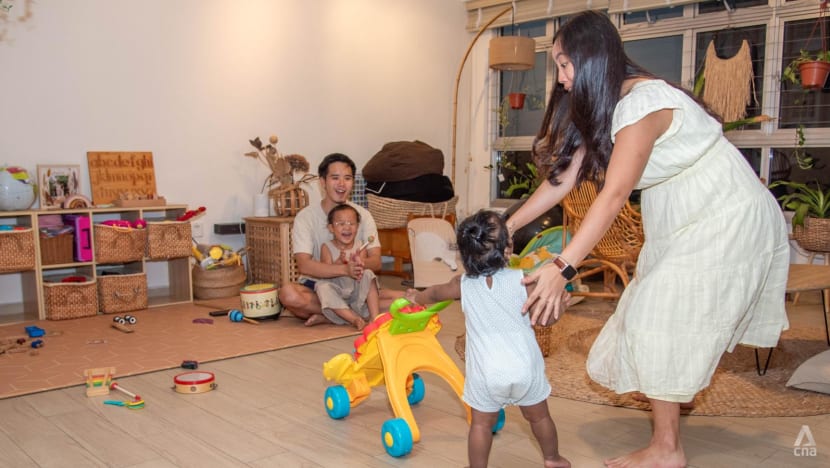
Melvin Soon and daughter Ariel cheer as Alora practices walking on Jan 30, 2024. Joanne Ong stands ready to support Alora. (Photo: CNA/Eugene Goh)

This audio is generated by an AI tool.
- The number of children in foster care has increased from 311 in 2012 to 540 in 2022
- Fostering provides children from troubled homes with a safe haven to grow, until they can return to their birth families
- Being in a loving environment can help these children manage their emotions better, said a clinical psychologist
SINGAPORE: When Mr Melvin Soon, 31, said goodbye to his first foster child Benjamin, emotions ran high and he had tears in his eyes.
“I looked at him, he looked at me and I said I don’t know whether after today we will see each other again. But remember that you were like our family,” he said.
He watched longingly as the car that came to pick up the six-year-old boy drove away.
“The both of them made it very dramatic,” his wife, Ms Joanne Ong, 29, said with a fond chuckle.
In the span of six months, the couple had gone through highs and lows with Benjamin, who came to them from a challenging home environment.
His departure was bittersweet. The goal of fostering Benjamin was to eventually reunite him with his biological family – but Mr Soon was heartbroken that the boy, whom he had grown close to, would be leaving.
But going through the grief, sadness, and the knowledge that they may never meet again was worth it, said Mr Soon.
“We are able to grieve the loss when they (foster children) eventually do go back. We can process those emotions,” he said.
“They get a chance to experience the love, peace, joy and safety. That’s more important than our sad emotions when we have to part with them eventually.”
Ms Ong, a freelance social worker, said she sees this grief as evidence of their connection with their foster child.
“You gave it your best, that’s why you … feel sad,” she said. “We know that we have really loved and that means we also hope that the person has experienced it.”

The couple has always wanted to foster children. About 10 years ago – before the couple met and started dating – they learnt about fostering and desired to provide a safe home for children from traumatic backgrounds.
This conviction grew, and they signed up to be foster parents in 2021. They took in Benjamin in early 2022 for half a year.
A few months after Benjamin returned to live with his birth family, the couple adopted their daughter Ariel in 2022. She was four years old then.
Last year, they started fostering 10-month-old Alora, and the couple will be welcoming a baby boy in May.
*The real names of the foster children cannot be used in this article as their identities are protected.
FOSTERING IN SINGAPORE
According to the latest statistics, there were 596 foster families in Singapore in 2022 that – like Mr Soon and Ms Ong – care for children who had to be removed from their birth families.
As of December 2022, there were 540 children in foster care.
The number of children in foster care has gone up over the last decade.
The number of cases investigated by the Child Protective Service has risen in recent years – from 415 cases in 2011 to 2,141 cases in 2021.
Nearly 800 cases in 2021 were investigated for physical abuse and more than 440 cases for sexual abuse.
According to the Ministry of Social and Family Development (MSF), children may be removed from their birth families due to safety concerns.
Fostering provides these children with a safe and stable family environment in a temporary care structure.
The aim is for foster children to return to their birth families once the families are assessed to be able to resume care for them.
In about 98 per cent of cases investigated by Child Protective Services, children either remained with their birth families or were reunited after being temporarily removed.
For the remaining 2 per cent of cases, they are unable to return home because of reasons such as parents’ chronic incarceration, serious mental health conditions or the parents’ unwillingness to provide a safe environment for the child.
"PAST WOUNDS"
Being a foster parent can involve different challenges because of a child’s past. Benjamin was old enough to know his biological parents and remember the things that happened to him.
He wrestled with his emotions and lashed out at people, while struggling to trust the couple initially.
Ms Ong explained that children from such homes may have had their trust broken by their birth families.
“When they come to the foster care system, they are bringing along all of these past wounds that may not be entirely processed.
“One of the challenges is that we are welcoming a child with a life story that is sometimes too much for them to bear for their age,” she said.
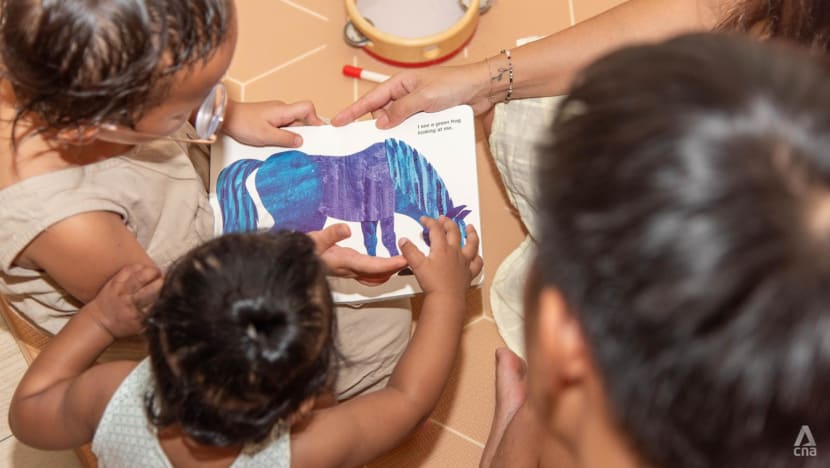
Dr Cherie Chan, a clinical psychologist at The Other Clinic, explained the different emotions a child may feel when they are removed from an abusive home.
“Sometimes even if the situation is objectively bad or dangerous, the child may still feel a mix of emotions such as relief and guilt for getting out of a difficult or abusive situation,” she said.
“Most children do not get the full story of what is happening and things can occur very abruptly.”
This can lead to feelings of anxiety and helplessness, as they are moved from an unsafe but familiar home – with their birth families – to a likely safer but unfamiliar environment.
“These children may also feel a lot of shame and embarrassment for having to live with someone who may not know or understand them,” she explained.
Ms Tham Yi Ching, a foster care worker at Epworth Community Services, said foster children may have different habits from their foster parents. They may feel disoriented and scared, and even have difficulty eating and sleeping in a new place.
As part of her job, she makes regular home visits to support foster families. To make the transition easier, she suggested bringing the child on a house tour and making the room inviting to them.
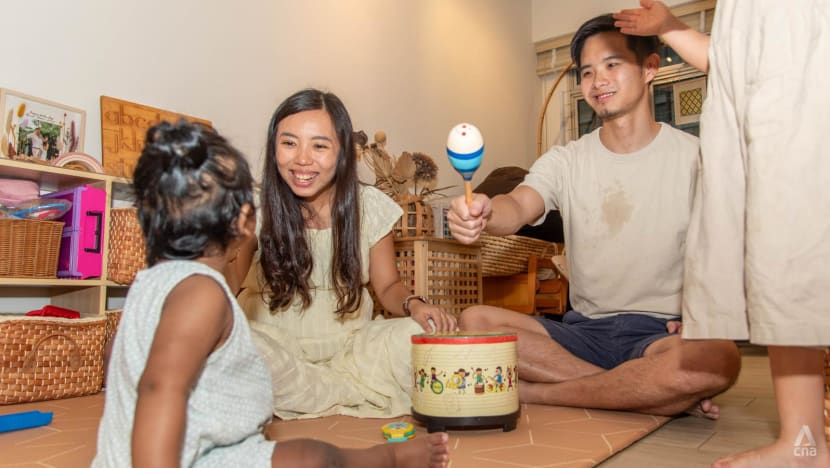
As foster parents, Mr Soon and Ms Ong try to build trust, provide a safe home and hold space for their children’s big, overwhelming emotions.
“It’s journeying with them. You will experience a lot of moments like maybe a tantrum thrown at you, or maybe you feel super unappreciated,” she said.
When Benjamin was angry, he would shout at them to go away, but when they went away, he would shout at them to come back, Mr Soon said.
He would also sometimes tell them that he did not want to be with them and that he wanted to go home.
“You need to realise they are going through a lot. They are transitioning to us and they are also grieving the loss of their natural home and family.”
Once, after Benjamin spent the weekend with his birth family, Mr Soon and Ms Ong went to pick him up from the MRT station.
“He was screaming at the top of his voice ‘I don’t want you, I don’t want you’,” Mr Soon recounted.
“We had to work through it, and eventually he felt more comfortable and opened up to us more, and he was more calm.”
Benjamin gradually learnt to manage his anger and communicate with his foster parents.
“Those are the fruits. You slowly see them building trust with you again, and that’s beautiful,” said Ms Ong.
“Those were points of breakthrough (and) we saw how it was worth it.”
CREATING A SAFE SPACE
Looking back, Mr Soon realised he didn’t know what he would be getting himself into when he started to consider fostering 10 years ago after hearing about it in church.
“You just feel like this is a very nice picture – a family, foster child, adoptive child. It was just ideas and concepts,” he said.
“Eventually we welcomed the children to our family, and there are times when things are difficult.”
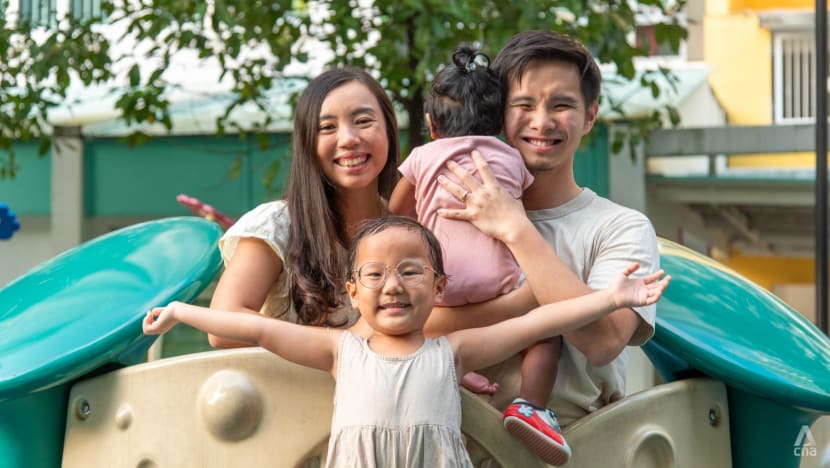
They learnt to validate their children’s emotions and tried to help them understand that they were safe. Typical parenting methods may not always work.
Mr Soon and Ms Ong had attended the mandatory training sessions and did their research, but still found themselves fumbling.
“You can never fully be equipped, as with all parents. It’s a similar journey as parents (who only have biological children),” said Ms Ong.
“You just try your best, but there will be certain things that will be unexpected that you just learn and grow from.”
Mr Soon added: “It doesn’t come naturally. Sometimes you have to take a step back yourself and take deep breaths to not lose it.
“(We’ve) got to be very aware of our own emotions also.
“What we learn in books and in theory is one thing. Sometimes it might not turn out that way, or rather it takes a long time. We need to keep remembering that it’s a process.”
As parents to foster children and an adoptive daughter, it takes time for their children to feel secure.
He recalled a time when he was at his wits’ end with Ariel. Instead of scolding her or being stern, he asked her if she knew why it seemed like she was unable to change.
“She said ‘I don’t know’. I told her it’s because something happened in (her) past and that’s why she keeps doing this,” he explained.
“But I also said I’m so sorry that (she) had to go through this.”
He calmed her down, explaining that she was in a safe space. That seemed to get through to her.
“From time to time, she will tell me, ‘I don’t need to worry about this anymore, mummy and daddy will take care of me’,” said Mr Soon.
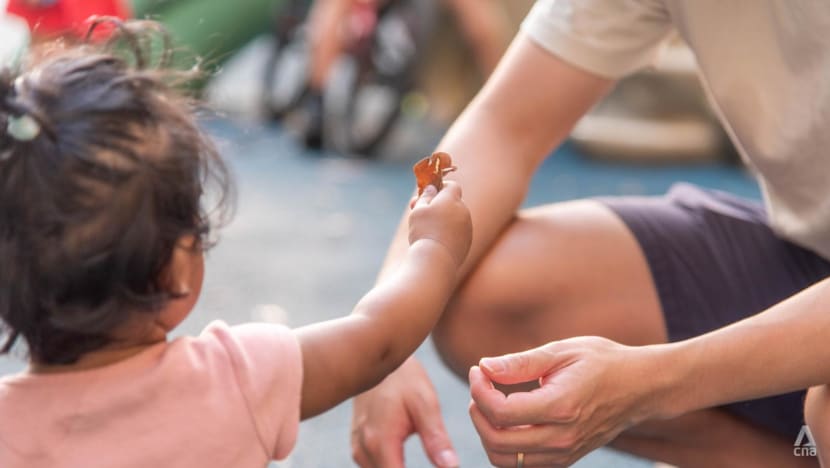
Dr Chan said that being in a loving environment can help a child who has experienced trauma to learn how to experience life differently.
Abuse or punitive parenting styles can cause hyperarousal – where the child is constantly on high alert – and over time, that can be harmful to the development of emotional regulation skills.
“More positive parenting models can help increase emotional competence and regulation through modelling to the child how to manage difficult emotions and how to be together with the child in stressful situations rather than reject or neglect them,” she said.
Mr Soon has learnt to be gracious with himself and recognise that everything is a work in progress.
“You go into fostering or adoption thinking ‘I’m going to be this super trauma-informed father who knows how to love the child no matter what happens’,” said the 31-year-old chemical engineer.
“But sometimes you fail, then you have to take a step back and realise you weren’t as good as what you think. It’s ups and downs, and next time you try harder again.”
For Ms Ong, it is the “availability to learn and to love” that matters when fostering. "They're not calling for perfect foster parents," she added.
Dr Chan urged foster parents to join support groups and allow themselves to get financial and mental help.
“Fostering in itself can both be tiring and extremely rewarding even if the foster child is under their care for a short period of time,” she said.
“Giving themselves time for their needs will better allow them to reset, ground and ‘fill their bucket’ so that they may be able to be more present and giving to the child under their care.”
GETTING SUPPORT
Family and friends also have supported them in this journey, from taking care of the children to buying clothes and toys for them.
When Alora was placed with their family, they did not have the items needed to care for a four-month-old.
“We had zero, and within one month we had to get everything,” said Ms Ong.
“People even come and drop by to pass us things,” she said. “I have never bought a single thing (for the children).”
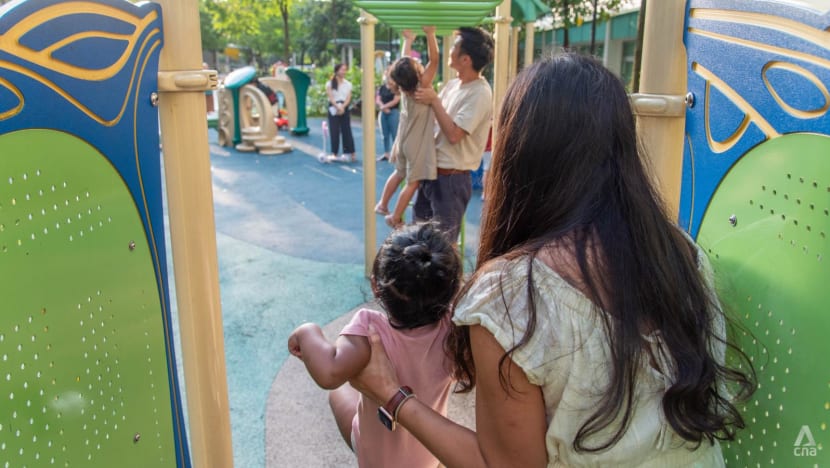
Alora’s needs are different from Benjamin’s and Ariel’s, given that she was not yet a year old when she came into the couple’s care. It involved a lot of practical caregiving.
“Even though she’s the third child, they entered (our family) at different ages,” said Mr Soon.
“Our parenting (journey) is a bit more jumbled up,” said Ms Ong.
The couple noticed that, like Benjamin and Ariel, she had no fear of strangers initially. It was a possible sign that she had not formed strong attachments to her caregivers, but could also have been her young age.
Now, she will cry if she’s uncomfortable with someone, or if her foster parents leave her.
Mr Soon said that there may be insecurities that surface later in life.
“We just have to watch out and don’t be complacent,” he said. “We have to be prepared for that.”
When accepting Alora’s case from the fostering agency, the couple also had to consider the impact on Ariel. They declined to share the details of Ariel’s adoption, except that she was born overseas and likely also faced abuse or neglect.
“Turns out, (Ariel) really loves Alora, so thank God. She’s like born to be a big sister,” said Mr Soon.
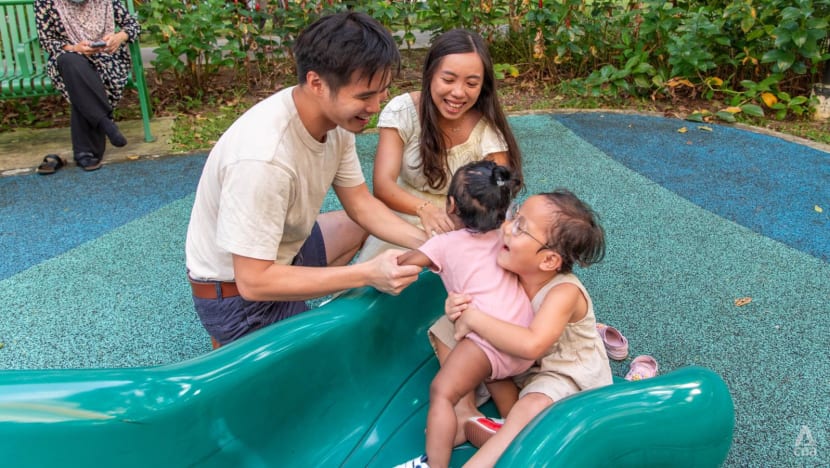
“This is my baby! This is my foster sister! This is my sister, this is my meimei (Mandarin for younger sister),” the couple said, imitating Ariel’s proclamations about Alora.
“That gives us confidence that when our biological child comes, she’s also equally ready to be a big sister,” said Mr Soon.
It’s exciting to see how all these individuals can be a family without having biological ties, Ms Ong said.
“We can still love each other. You see how Ariel loves Alora ... and they enjoy (being with) each other.”
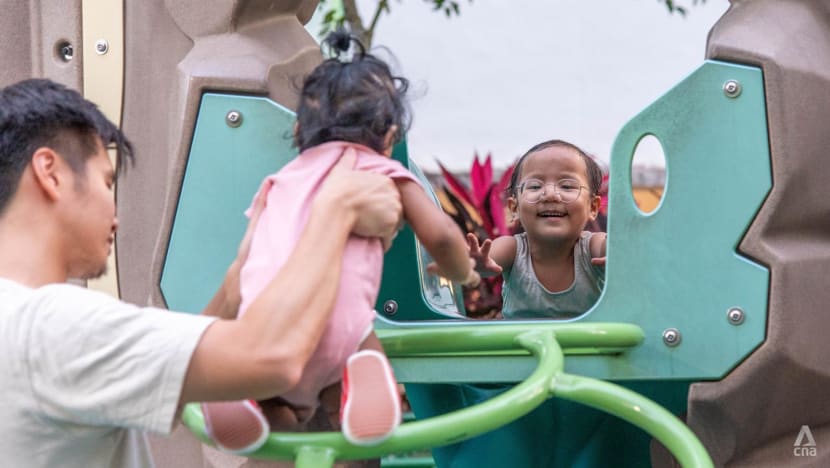
SOMETIMES, IT’S OUT OF OUR CONTROL
The foster care system in Singapore has come under the spotlight following a series of court cases about children who were abused by their birth families after returning from foster care.
One victim was a two-year-old girl named Umaisyah. Her death went undiscovered for more than five years.
She had been in foster care for about one-and-a-half years, but after she returned to her family of origin, she was abused to death.
Her body was burnt and her remains hidden, until her uncle found them in a pot.
Last September, her father was sentenced to 21-and-a-half years in jail and 18 strokes of the cane.
The court heard that Umaisyah’s foster mother would continue to visit the girl even after she moved home.
Ms Tham, the foster care worker, told CNA that the Child Protective Service will review the progress of a child’s birth family and assess when it is safe for the child to go home.
Where progress has been made and reunification is assessed to be “timely and appropriate”, increased contact will be made through supervised meetings, outings and periods of home leave.
The Child Protection Officer, foster care worker and foster parents will then prepare for a child to move home.
“Foster parents can help to prepare their foster children by processing their emotions and talking about their worries, hopes for the upcoming change, and emphasising their strength,” she said.
Dr Chan said foster children may feel torn between their two homes. There may also be feelings of guilt towards their foster parents if they are happy about leaving, or towards their birth parents if they want to stay on.
“It is also important to remember that the child who was taken away will not be the same child that returns to the family of origin given their new experiences.
“This may lead to stress and tension as the child learns how to navigate new family patterns,” said the clinical psychologist.
MSF said regular safety checks and monitoring are carried out for at least 12 months after a child returns to their family of origin.
But in some cases, these children have to be removed again and end up back in the foster system – Benjamin was one of them.
Mr Soon and Ms Ong were asked if they could foster Benjamin for a second time shortly after they adopted Ariel.
Ms Ong does not want to judge the situation with Benjamin’s biological family because they had unique circumstances that led to him being removed again.
“It’s just sad that the child is always the one who gets affected,” she said.
The couple could not take Benjamin back in because Ariel was still adjusting to life with them. When Benjamin was living with them, they made a similar decision not to expand their family so as to focus on him.
“We didn’t want to introduce a new child to the family because we feel like it won’t be fair to the foster child whom we actually committed to look after,” said Mr Soon.
Benjamin’s return to the foster system broke their hearts.
“We just trust that whatever we have done with him in our family will bring him through in life, and trust that whatever seeds that we have sown will (bear) fruit eventually.”
Thinking about fostering?
To be foster parents, couples must be married and aged 25 and older. They must have completed their secondary school education and be medically fit to care for children.
Couples must also have a minimum monthly household income of S$2,000 (US$1,500) and a per capita income of at least S$700. Those who are retired can be financially assessed based on non-work sources of income and savings.
If they are planning to foster children below 13, window grilles must be installed on all windows.
The entire application and assessment process to become a foster parent takes about three months. During this time, there will be interview sessions and home visits by MSF or an MSF-approved agency.
Couples are also required to undergo medical screening.
Once approved, they have to attend the mandatory foundation and intermediate training courses.
MSF provides foster parents with a monthly allowance of S$1,100 per child, and S$1,500 for a foster child with special needs. There are also subsidies for infant care, child care, student care and medical treatment.
Besides financial support, foster care workers also guide and help foster parents through regular phone calls and home visits.
Foster parents can request for respite care for brief periods, such as when travelling overseas. They are also entitled to childcare leave.
MSF holds regular sharing sessions about fostering. You can find the upcoming ones here.
“NEVER UNDERESTIMATE EVERY SMALL MOMENT”
Mr Soon and Ms Ong recalled a moment with Benjamin when his time with them was coming to an end.
They had printed out photos of their time together and arranged them in what they called a “life book”.
“What really amazed me and affirmed the call of fostering for us, was that he really could remember every single moment from the pictures we printed,” Ms Ong said.
“‘Oh, I remember this, I remember this’, then he would add on some details, very minor details. ‘Uncle, Auntie, you remember?’
“Sometimes I forget, because it’s very small, very simple. But it meant something to him. So we realised all those ordinary moments you never noticed actually had an impact on him.
“That’s when I realised – never underestimate every small, ordinary moment with them.”















